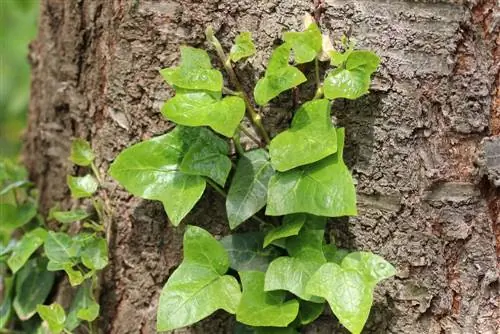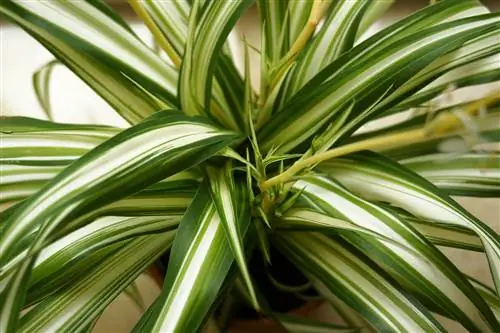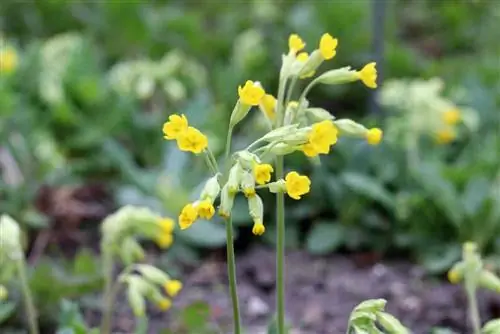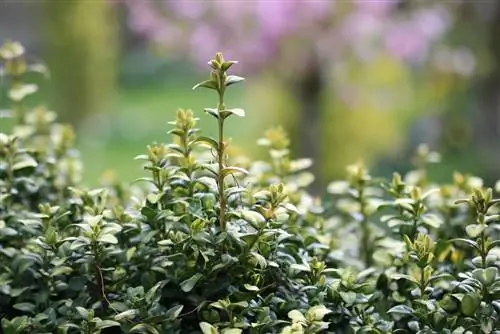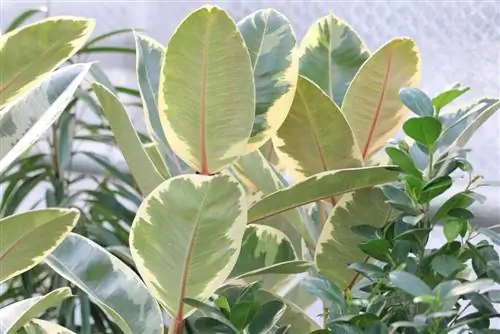- Author admin [email protected].
- Public 2023-12-17 03:39.
- Last modified 2025-06-01 06:48.
In Germany it is therefore one of the most popular decorative plants. Now, however, the climbing plant always appears in the lists of plants that hobby gardeners are warned about because it is considered poisonous. But is ivy fundamentally poisonous to humans and animals?
Poisonous or not - it depends on the plant
If people warn about ivy as a poisonous plant, this is in principle completely correct. However, a distinction must be made here. Because the ivy commonly referred to as Hedera is only really dangerous in the fruiting form of Hedera helix 'Arbonrescens', an old form of ivy that is propagated by cuttings and only forms small bushes. But not as a ground cover and in the youthful form, the Hedera helix. The common ivy is clearly one of the poisonous plants, the consumption of which can be extremely dangerous in large quantities. The older plants are particularly poisonous, as they produce tempting-looking but extremely toxic berries even as they get older and grow taller. These berries grow on flowering sprouts, which the ivy only develops once it has reached a certain height, which the plant usually only reaches after 20 years.
Poisonous berries - what are the dangers?
The ivy flowers bloom in a hemispherical shape and are yellow-green in color. The berries that develop from it are purple to deep black in color. The poisonous berries usually hang at a relatively high altitude, but in the old form of the common ivy, which is planted as cuttings on the ground and only reaches bush height, the berries can also be found at hand height in the garden. The toxins falcarinol and alpha-hederin are contained in these berries. As a rule, however, you should not expect to consume large quantities of the berries as they taste extremely bitter. However, if signs of poisoning occur in humans or animals, you should definitely notify the poison control center, which is familiar with such cases and can save lives if necessary. In the event of skin contact, rinsing with cold water is a first aid measure to prevent worse consequences. However, you should definitely consult a doctor.
Ivy leaves - not entirely without them
The berries are not the only parts of the plant that are poisonous. The leaves of common ivy can also be poisonous. In he althy people, skin redness may occur when touched. Weeping pustules can also be one of the skin reactions, which are not life-threatening but very unpleasant. It is therefore generally recommended to wear gloves when handling the climbing plant. What can be unpleasant for he althy people is usually even worse for allergy sufferers if skin contact occurs.
Effects, toxins and symptoms at a glance:
- Fruit pulp contains highly toxic saponins or hederin
- Eating just 2 to 3 berries leads to the first symptoms of poisoning
- Eating causes headaches, vomiting and nausea
- Body reacts to the poison with a jumping and rapid pulse
- Irritation of the stomach and intestines as well as vomiting diarrhea are caused by eating berries
- high concentrations of poison can cause convulsions, shock, respiratory arrest and death
- Skin contact leads to allergic reactions and skin inflammation as well as weeping pustules
Dangers of ivy for children
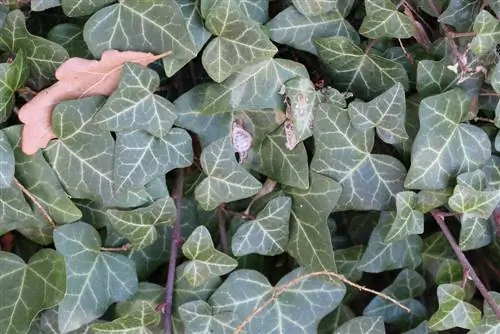
Basically, it is advisable not to tolerate ivy in places that children can easily reach. Caution is advised, especially during the time when the ivy bears berries, which purely from their appearance encourage children to put them in their mouths. The pulp of the berries, which contain most of the plant's poison, is actually highly toxic to children. Eating just three berries can lead to poisoning. Ingestion of the berries can lead to symptoms such as burning in the throat, headaches, diarrhea, vomiting, cramps, shock and even death due to respiratory failure in children. The ivy leaves are of course not completely non-toxic when children put them in their mouths, but in contrast to the berries they are only a lesser evil that, for example, B. can cause skin rashes.
Dangers of Ivy for Pets
- Pets that eat ivy show varying degrees of poisoning reactions.
- Basically, ivy is poisonous to dogs, cats, rodents, horses, rabbits, guinea pigs, hares, hamsters and also birds.
- The symptoms are usually similar to those in humans. Vomiting, agitation, diarrhea and cramps are observed.
- One surprise, however, is that ivy, although poisonous to horses, does not seem to cause any reactions in donkeys.
Taming the ivy - for safety’s sake
Ivy is an undemanding plant that spreads freely and abundantly. Therefore, it should be contained regularly for safety reasons. The hobby gardener should know how to avoid skin contact by wearing gloves. The ivy can simply be pulled out of the soil along with the roots, making sure that the roots are completely removed. Otherwise the ivy will sprout again from the remaining roots. Since poisonous ivy plants contain a resinous oil that can cause serious skin and lung problems if the plant is burned, this type of disposal should definitely be avoided.
What you should know about ivy in brief
The common ivy that grows in most of our gardens is poisonous in all parts of the plant, but only in high doses. Toxic ingredients are α-hederine and falcarinol. But ivy is also a medicinal plant. For this reason, ivy was considered a sacred plant in ancient times. Small amounts of prepared ivy leaves provide relief from bronchitis. Ivy tea made from dried leaves has an antispasmodic and expectorant effect. They are also often used in pediatrics.
Did you know
that there is also a seriously poisonous ivy? - It is the American poison ivy or oak-leaved poison sumac. This looks completely different than our ivy here and cannot be confused. Even young children are taught to be careful of this plant. It thrives everywhere and countless poisonings occur every year.

